A long, cold winter can leave your lawn looking less than photogenic, but with just a little bit of effort, you can take your yard from brown and sparse to green and lush just in time for warmer weather. So tune up your lawnmower, stock up on The Roundup® Brand Products (you can go to the Weeding Wisely site to find out which ones are right for your project), and check out the tips below to prep your lawn for spring.
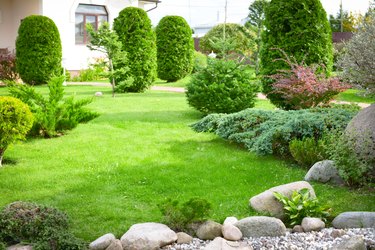
Video of the Day
1. Rake your lawn
Raking isn't just for fall. By giving your lawn a thorough rake, you'll be able to remove dead grass, sticks, and leaves that fell during the winter, and prevent dead grass from contributing to thatch—a layer of mostly dead grass that can keep water and other nutrients from reaching the roots of the live grass.
Video of the Day

2. Mow the grass
Mowing is a given for achieving lawn perfection, so use this opportunity before the grass really gets growing to make sure your mower blades are primed for lawn care. Sharp blades cut the grass cleanly, whereas dull ones tear at it, which can cause it to turn brown. Similarly, raising your mower blades to about two to four inches off the ground (depending on your grass type) will strengthen grass roots by allowing them to grow deeper, while also crowding out weeds.

3. Mulch your grass clippings
Consider this your permission to stop picking up your grass clippings after you mow. Not only will this hack save you time, it will benefit the health of your lawn, too. Grass clippings serve as a type of natural fertilizer to the soil as they decompose, which will help the new grass grow in even thicker and healthier, without requiring any additional effort from you.
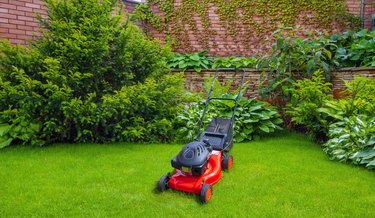
4. Get rid of weeds
If you want a front yard that mimics a golf course green, weeds are not your friend. Not only can they choke out grass, but they can cause discoloration and uneven patches that disrupt the uniformity of your lawn. To get rid of them, treat your grass with a weed-killer that targets the intruders without harming the grass—like Roundup® For Lawns1 Ready-to-Use, which helps control over 250 types of weeds,* even hard-to-kill varieties such as crabgrass, dandelion, clover, and yellow nutsedge.
* See inside booklet for full weed list.
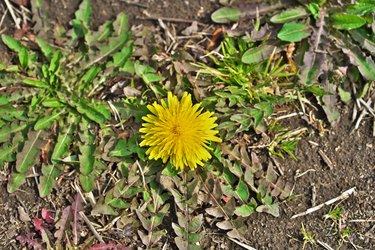
5. Form a weed barrier
Pulling weeds is the worst, but you can spend less time pulling them if you stop them from growing in the first place. Spring is the ideal time to put down Roundup® Landscape Weed Preventer around your established plants (like trees, shrubs, perennials, or bulbs) to prevent weeds from germinating as the weather warms up.
6. Seed if grass is very sparse
Overseeding (the process of spreading seeds on top of existing grass) can help turn a thin, sad-looking lawn into a lush thing of beauty. It's best done toward the end of spring to ensure a late cold snap won't kill the new grass, and be sure to water daily for the first two weeks.

7. Fertilize according to your location
Once you've planted your new seeds (or if you just want to encourage your existing grass to grow stronger), spread some fertilizer across your lawn. But before you jump right in, make sure you research which type of fertilizer to use based on timing, types of grass, and where you live.
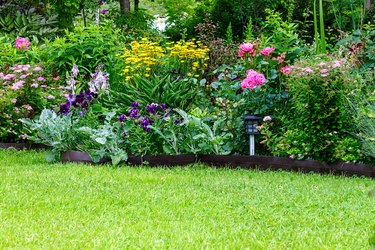
8. Don't forget your trees and shrubs
Flower beds and large stretches of grass aren't the only areas that need weed care. Put down Roundup® Landscape Weed Preventer at the base of any established trees or shrubs, followed by a layer of mulch, and your yard will take on a more manicured look.
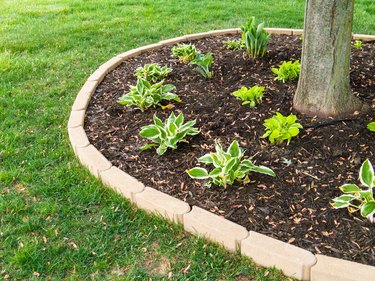
9. Diagnose any persistent lawn problems
Extended dead patches or discoloration of the grass might not just be a result of winter dormancy. You could be dealing with a problem such as pests, disease, over-fertilization, or even too much dog urine. Do some research to figure out the proper course of action, and enlist a professional if you need some help.
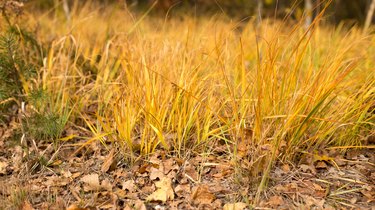
10. Water in the morning
If April showers aren't doing the trick and you determine your lawn needs extra water, be sure to set your sprinklers for morning. Watering too late in the day won't give the grass enough time to dry before it gets dark, which can create optimal conditions for disease to spread. Instead, aim to water between 5 a.m. and 10 a.m. so the moisture has time to sink into the ground before the afternoon sun evaporates the rest.
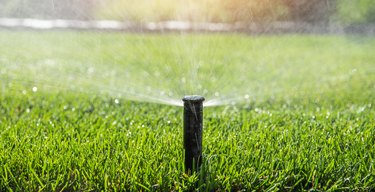
Want more info on which Roundup® Brand Products are best for your lawn or garden project? Click here for product suggestions and tips on how to use them.
ALWAYS READ AND FOLLOW PESTICIDE LABEL DIRECTIONS. Not all products are registered in all states and may be subject to use restrictions. Roundup and Design® and Roundup® are registered trademarks of Bayer Group. 2021 Bayer Group. All rights reserved.
